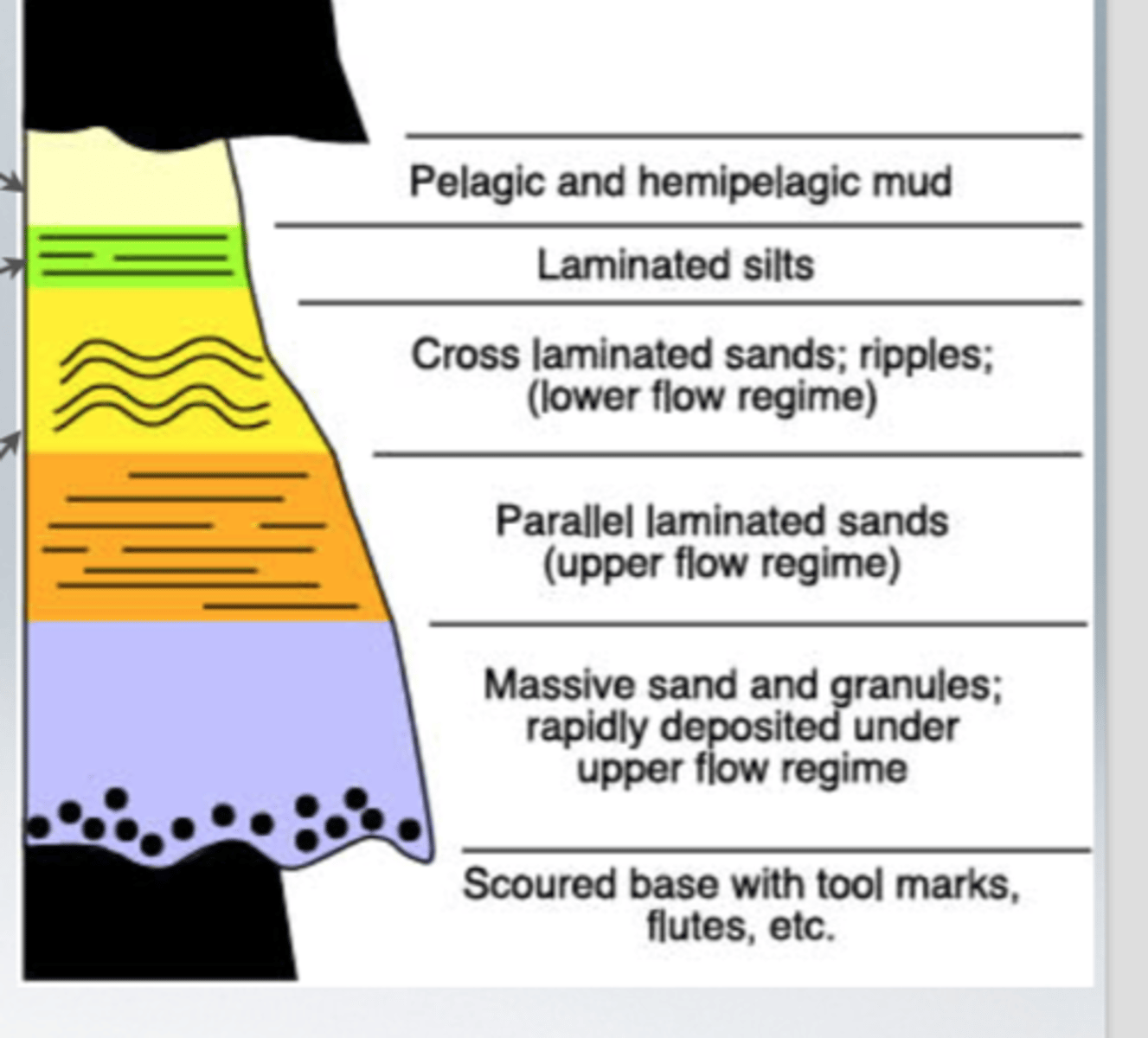Ch 9 GEOL 215 Sedimentary Rocks
1/39
There's no tags or description
Looks like no tags are added yet.
Name | Mastery | Learn | Test | Matching | Spaced |
|---|
No study sessions yet.
40 Terms
disintegration & main types
Breaking to smaller fragments. Surface area increase leads to more weathering
Main types:
Jointing (decompression included)
Frost action
Biological processes
decomposition & main types
Changes in composition by chem and biochemical reactions.
Types:
Dissolution (dissolving)
Ion Exchange (clay formation, breaks down feldspar minerals)
Hydrolysis (Add H+ or OH-)
Hydration/dehydration (+H2O or reduce H2O)
Oxidation (electron transfer usually with O)
Chelation (see next slide)
Chelation and products
organic hydrocarbon complexes produced by lichen and humus decay. produces dissolved metals in organic ring complexes
Hydrolysis decomposition products
Clay minerals such as kaolinite, illite, smectite
Ion exchange decomposition products
Dissolved solids including Na+1 and K+1
Climate needed for high decomposition
warm and wet climate
Climate needed for high disintegration
cool and dry climates
Mineral stability lowest to highest
Halite
Calcite
Olivine
Pyroxenes (augite)
Calcic Plag
Amphiboles (hornblende)
Sodic Plag (albite)
Biotite
Orthoclase
Muscovite
Clay minerals
Zircon, rutile, tourmaline
Quartz
Al oxides (gibbsite)
Iron Oxides (hematite)
Goldich's series
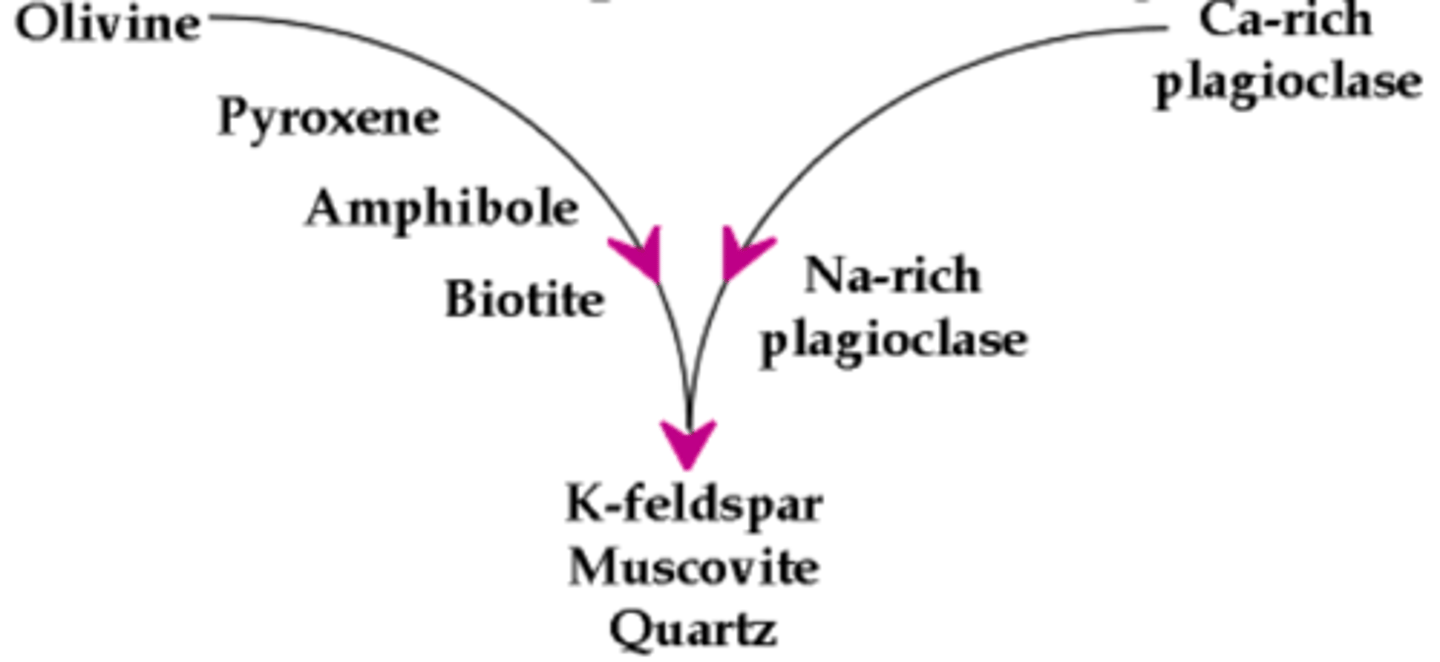
classifications of sediments
Clastic (sandstone, shale)
Chemical (limestone, Gypsum)
Organic (coal, chalk)
Sedimentary cycle
Weathering and erosion
Sediment transport
Deposition
Diagenesis
Compaction
Cementation
Uplift and exposure of source rocks; Restarts
Types of sediments
Detrital (sandstone, shale)
Biochemical (limestone, gypsum)
Organic (coal, chalk)
Environments of Sediment Formation
Terrestrial (Eolian, Stream, Glacial environments, etc)
Transitional or Paralic (Estuarine, delta, shore environments, etc)
Marine (deep marine, shallow marine)
Princ of original Horizontality
Everything is originally flat, any tilting is after the layering occurred) with the exception of crossbedding of dunes
Superposition of strata
Younger rocks are originally on top of older rocks
Thick strata
> 1cm; Beds
Thin Strata
<1 cm; lamination
Fluid Flows
water, wind. No shear strength so the smallest stress sets them in motion, leads to significant sediment transport
Plastic Flows
Glaciers. have shear strength so requires some stress to set in motion such as gravity
Laminar Flow
Flow with smooth, layered fluid. Typically high viscosity, low speed fluids in smaller channels

Turbulent Flow
Flow with chaotic, mixed fluid. Typically low viscosity, high speed fluids in wider channels

Sediment transportation by water diagram
Traction is part of bed load
Suspension is in suspended load
Solution is dissolved (ions)
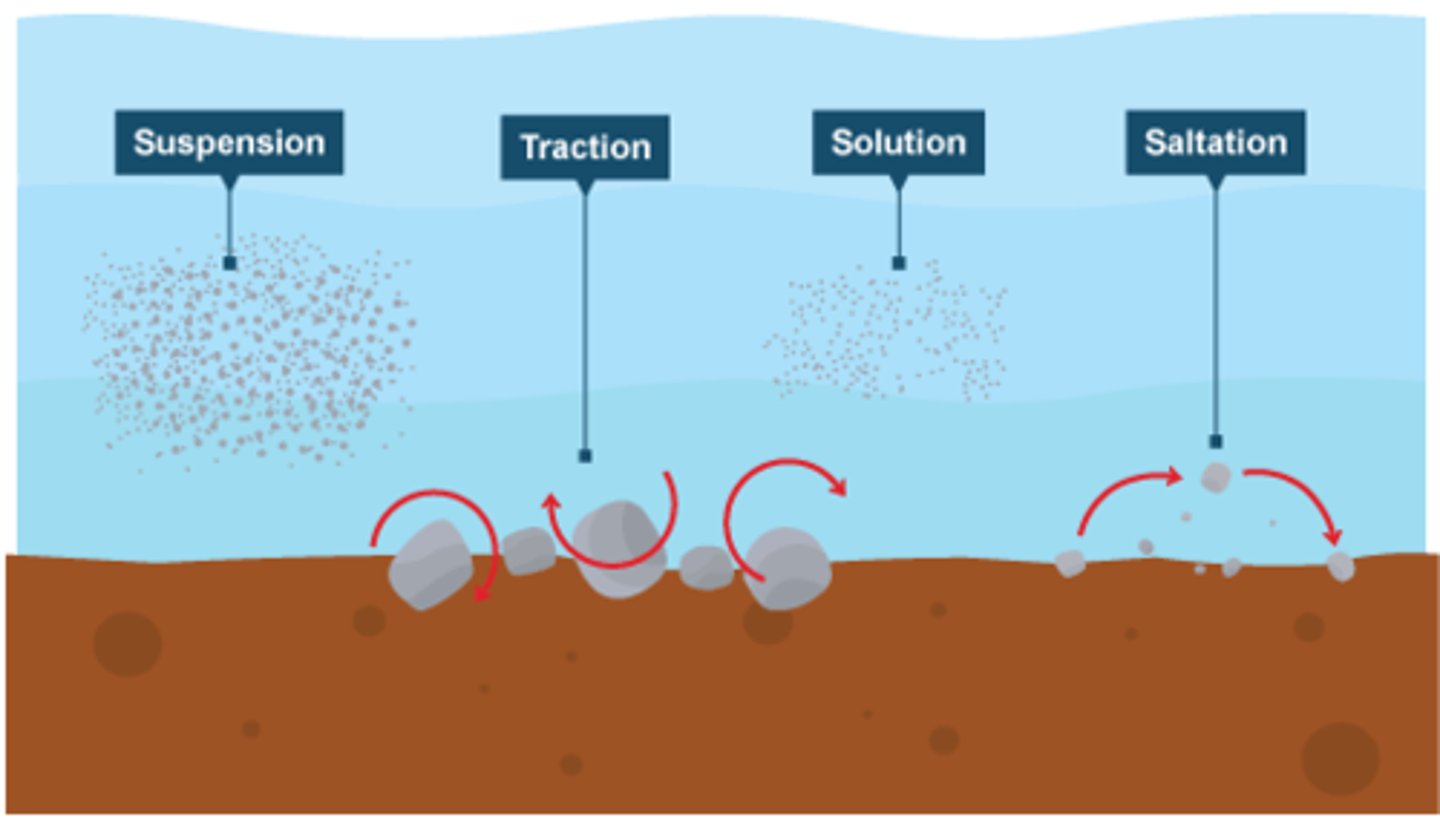
Hjustrom's diagram
Entrainment (eroded) transportation, and deposition are determined by this graph
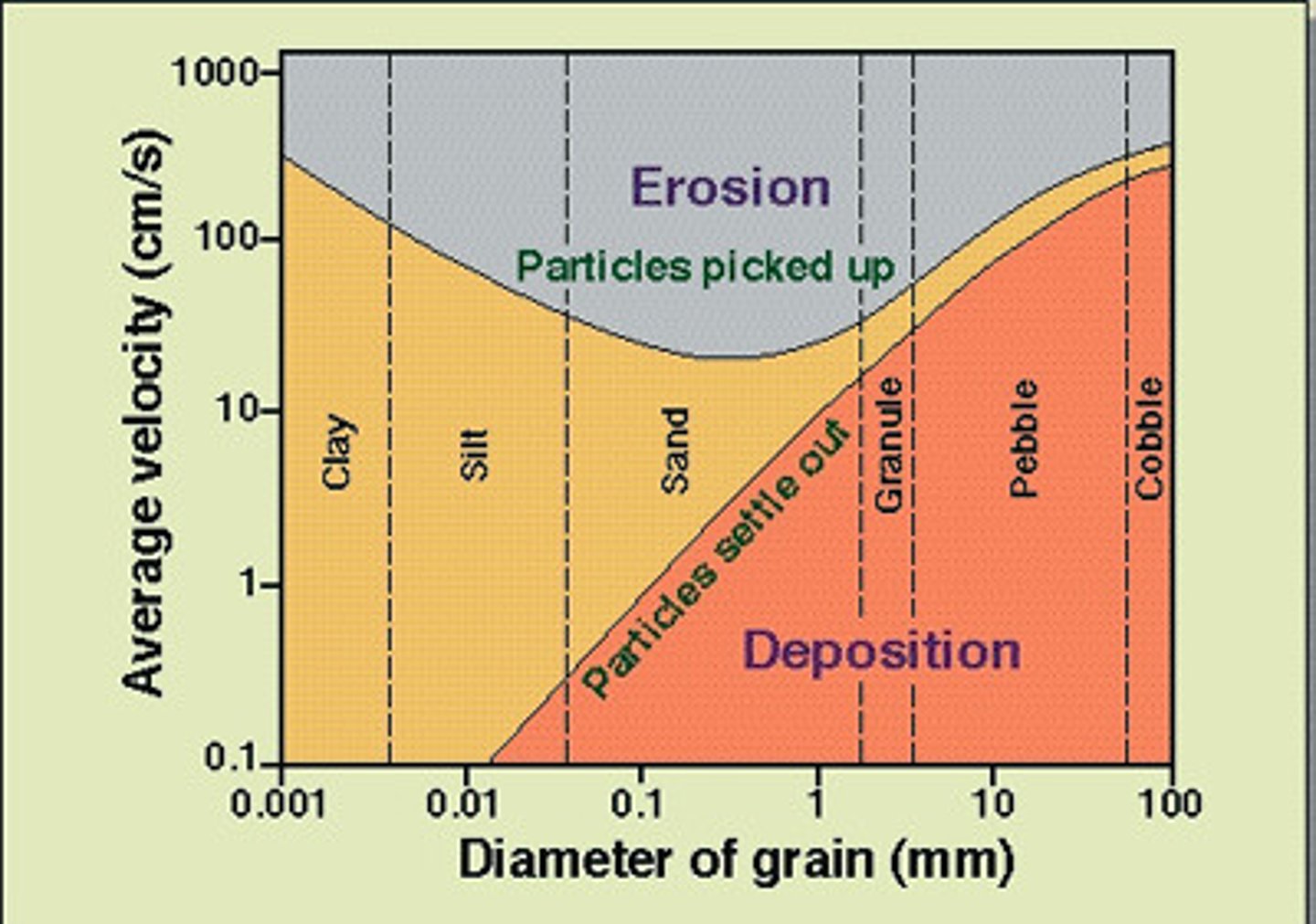
Unidirectional flow regime
Flows in one direction over time
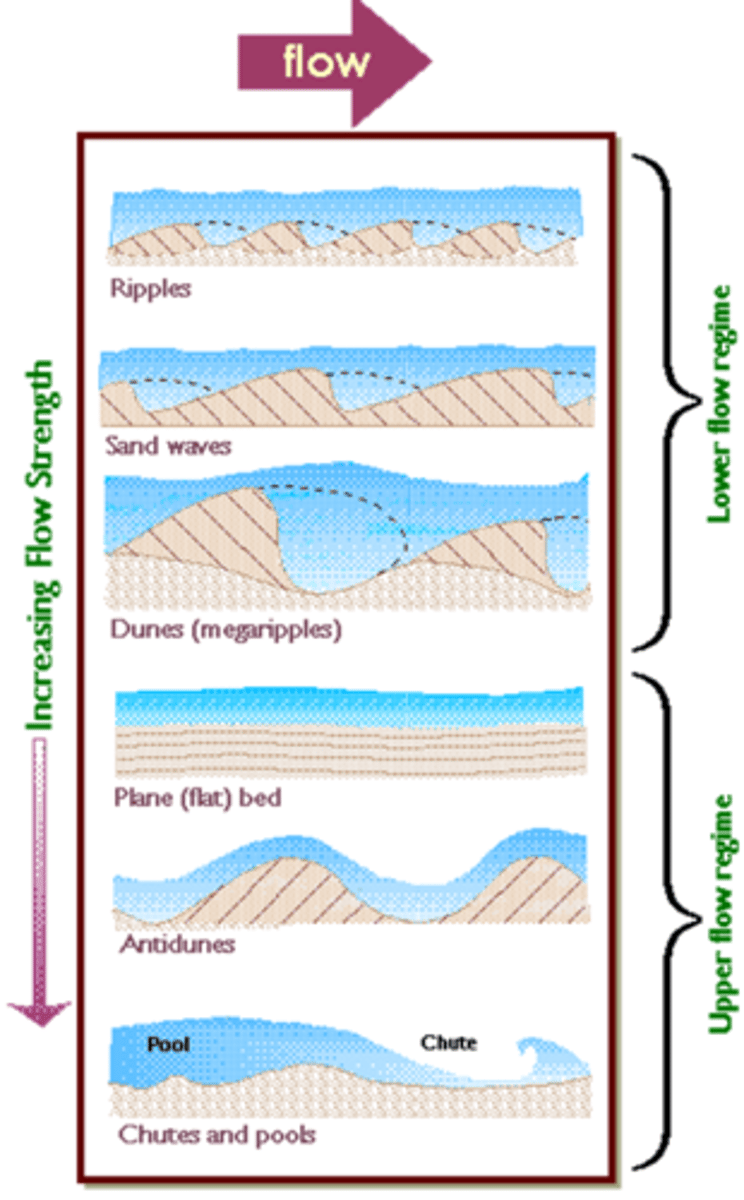
Wavebase
depth in water at which waves at surface do not affect
Glacial Sediments
Glacial till
Lithified --> tillites
Varves
Lake freezes in winter and thaws in summer. Darker=organic-rich, summer
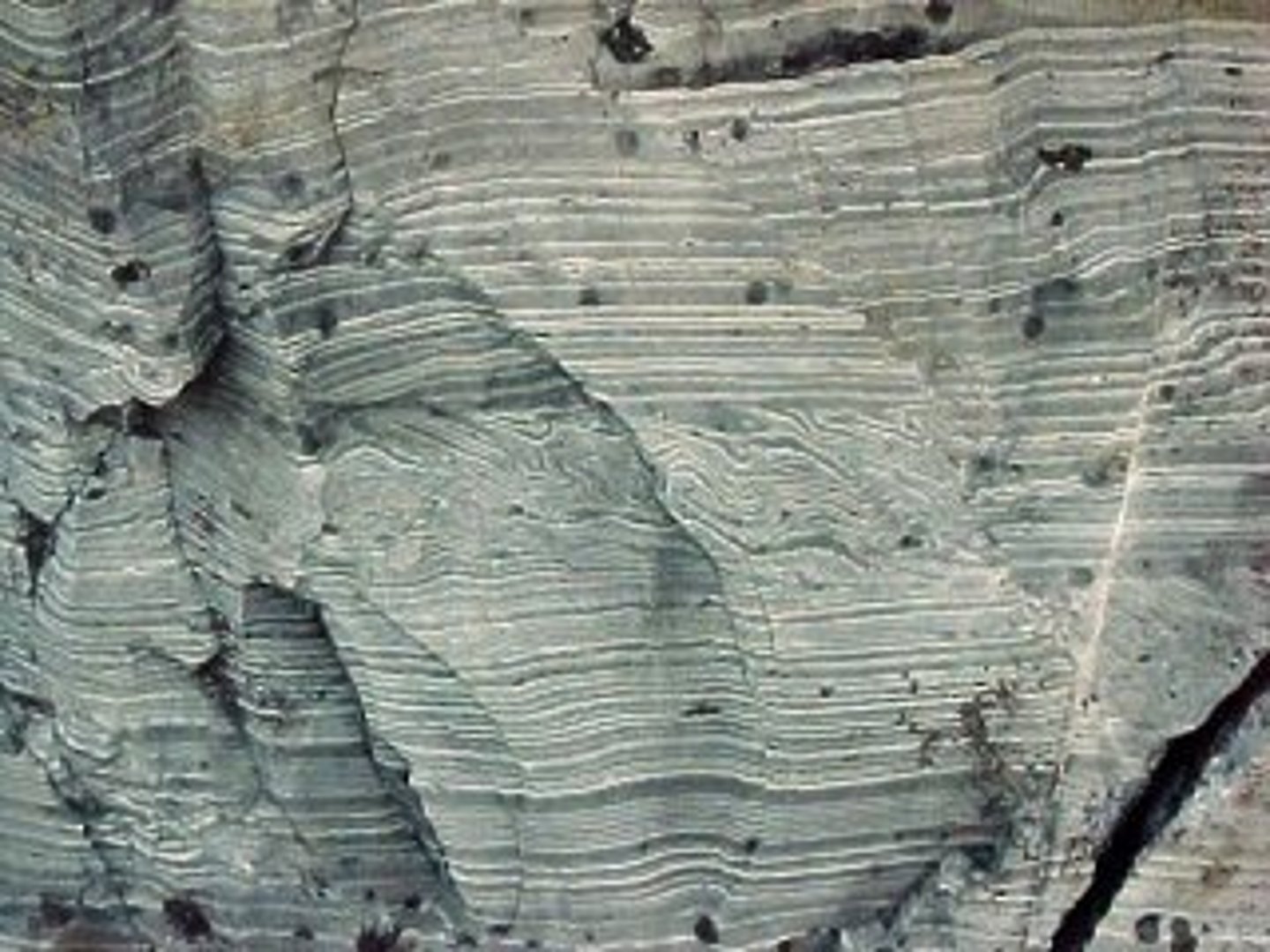
Dropstones
Dropped from glaciers, disturbs laminations
Sediment transport by wind diagram
Dependent on grain size
Clay and silt: suspension
Coarse silt and sand: saltation
Fine to coarse sand and gravel: creep
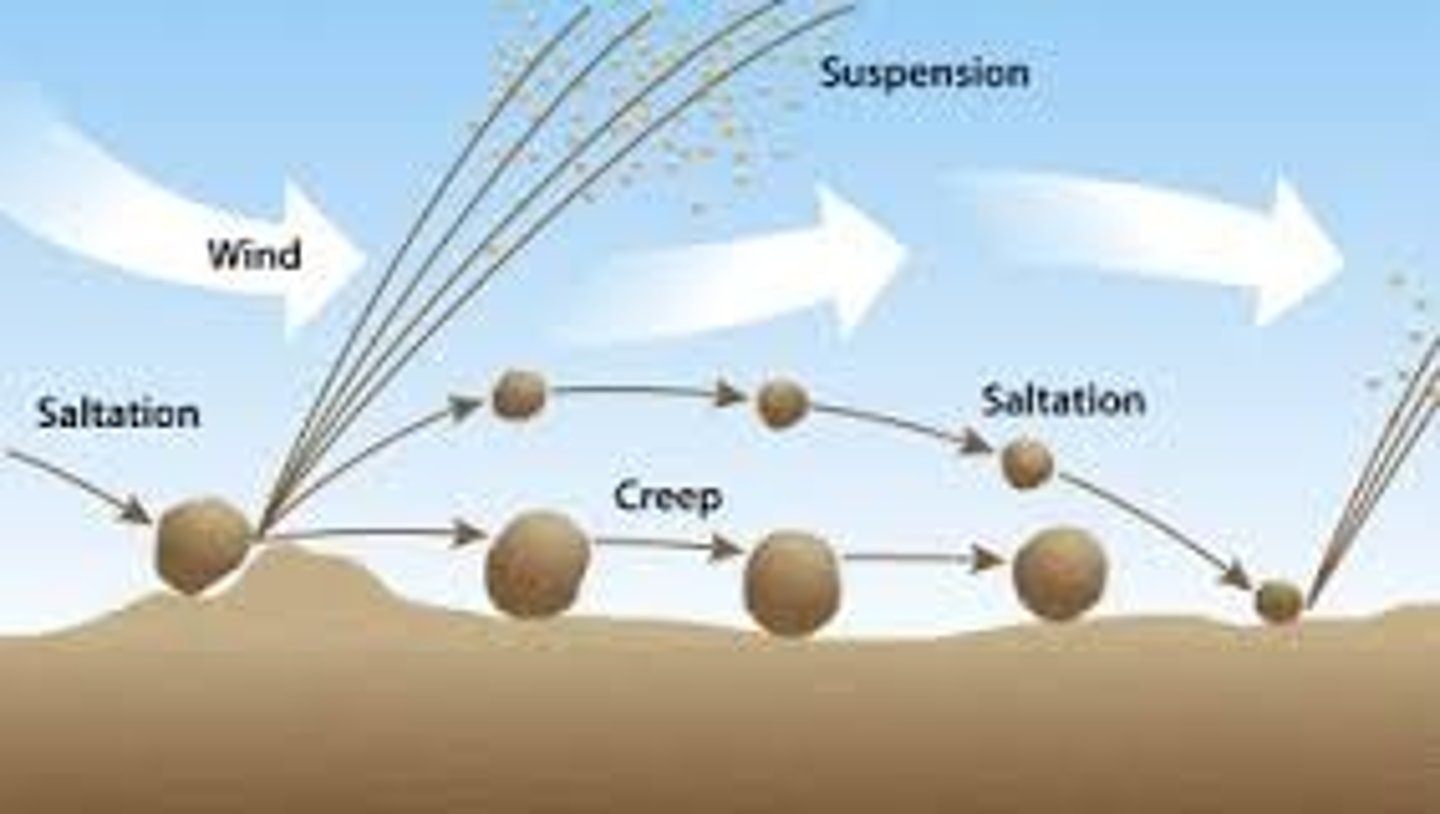
Eolian sediment characteristics
Well-sorted
Downwind sequences:
Deflation
dune fields -> deposited via traction
Well-sorted mud deposits from suspension (Loess soils)
Deflation in Eolian sediments
coarse lag gravels where finer material has been removed
Sand dune morphologies
Straight crested - transverse dunes
Curve-crested - Barchan and parabolic
Classification of Sediment transport by mass flows dependent on:
Internal cohesiveness of rock
Proportion of sed:water
how sediments are supported in the flow
Max flow speed
Cohesive flows
Caused by lack of cohesion of rock mass and substrate, but maintains mass cohesion as it moves. Ex: rockslides and slumps
Granular Flows
Large prop of sed to water; >80 (sediments) : <20 (water) +air. Ex: avalanches, debris flow, soil creep
Slurry Flows (liquefied flows)
Movement that can be faster (100km/hr) and water is important. Smaller proportion of sediments to water; 60-80 (sed) : 20-40 (water). Ex: debris flow and mud flows
Hyperconcentrated flows
Water important to maintain this flow. Low proportion of sed particles; 20-60 (sed) : 40-80 (water). Ex: subaqueous turbidity flows
How to recognize debris flow
Poor sorting by size
Crude/no internal stratification
Inverse grading (big to small)
Boulders and pebbles dispersed in fine matrix
Turbidity Current
Dense water flow with sediment suspended due to turbulence, in higher energy areas. Not turbulent flow, different concept. Deposits called turbidites
Bouma sequence
describes a classic set of sedimentary structures in turbidite beds deposited by turbidity currents at the bottoms of lakes, oceans and rivers
